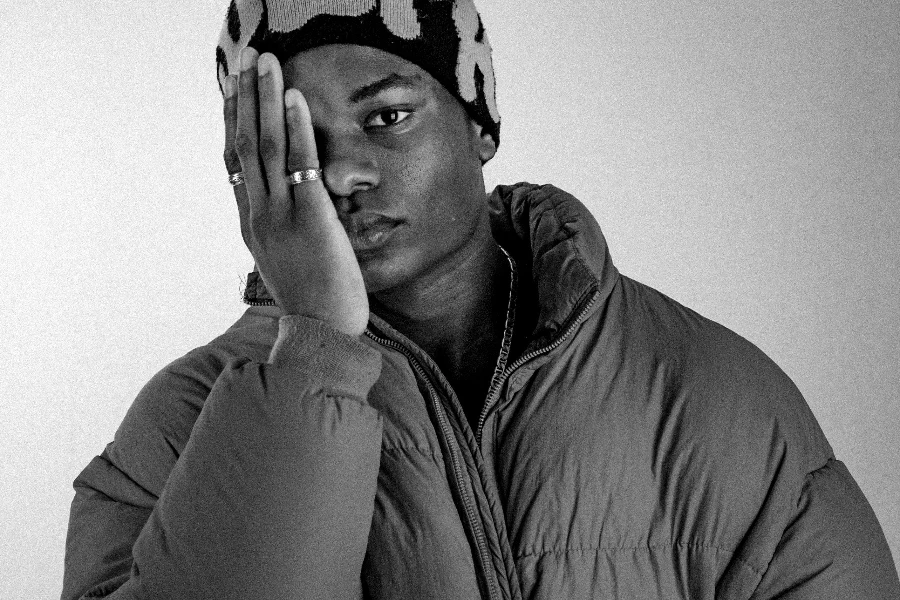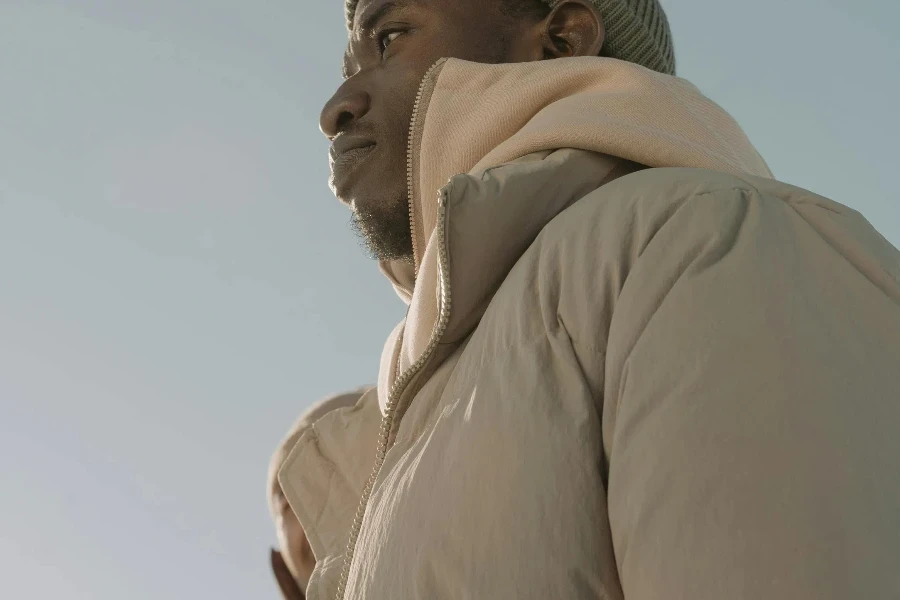The puffer jacket is one of the staple items of menswear, especially for the winter months. Famous for its boxy quilted design and superior warmth, the puffer jacket provides men a perfect balanced mix of style and functionality. Its unique look, combined with the benefit of being one of the warmest winter coat styles, makes it a favourite among outdoorsmen, urban nomads and anyone else looking to upgrade their winter wardrobe. In this guide, we survey the key features of the puffer jacket for men, helping you make well-informed decisions about what is in your best interest.
Table of Contents:
– Understanding insulation types
– Choosing the right fit and size
– Exploring style and design options
– Caring for your puffer jacket
– Sustainability and ethical considerations
Understanding insulation types

One of the most important consideration when buying a puffer jacket is the type of insulation. The insulation is the reason you are buying the puffer jacket in the first place. To keep you warm! There are two types of insulations we will focusing on, down and synthetic.
Down insulation is produced from the soft under feathers of ducks and geese. Widely recognised for its high warmth-to-weight ratio, its blend of very fine hollow fibres and air creates an excellent level of insulation when dry. Down insulation can be compressed into a space far smaller than its volume when fully loaded with air and is therefore easy to carry. Unless treated with a water-resistant coating, dampness or immersion in water will cause it to lose its insulating properties. The fill power is a measure of the quality of down insulation, from 400 to 900; the higher the number the better the insulation.
Synthetic insulation is made from polyester fibres and designed to function like down but with added benefits: it works better in wet conditions, for instance, remaining warm when damp, and it is hypoallergenic and often cheaper than down. Synthetic fibres are being developed to make insulation ever lighter and more efficient.
The best insulation for you is the one that matches your activity and lifestyle. If you live in a very cold, dry climate, and like to remain warm while outside, your best bet is down. Down insulates so well and provides the best warmth in the wet for its weight. If you live in a wet climate, or are doing an activity where you might get wet, you should choose synthetic insulation so you can stay warm and dry.
Choosing the right fit and size

Purifying a word implies that not only fit and size are important when picking a puffer jacket, but also that a well fitting jacket will make you look better as well as make you warmer and more comfortable.
Slim fit jackets are designed with a closer fit to the body, with a much more sleek look, that also sacrifices layering room underneath. This sort of jacket would be more suitable for the urban outdoors, where style is at least as important as functionality. You’ll notice these jackets are narrower through the shoulder and waist, giving off a much sharper impression.
Regular fit Jackets are a perfect blend of style and comfort. Layering is moderate and it is great for various activities. This fit is appropriate for daily work, leaves enough space to move and does not look too loose.
Relaxed fit jackets are the loosest fitting, they have the most room, work well with layering underneath many different pieces of clothing. This type of jacket is used for outdoor activities and sports mostly.
It’s been made really big through the chest area and the waist area so that person can move around freely for longer periods of time in all kinds of conditions.
Think about your layering habits: is it warm enough on its own, or will you be adding layers? A smart move is to try on jackets layered with a sweater or base layer (if you plan to wear them that way). Make sure that you have room to move: can you swing your arms? Are your shoulders free?
Exploring style and design options

There are different styles and designs of puffer jackets available which caters the taste and needs of different people.
In this essay i will discuss about the different styles of puffer jackets and how can we choose a suitable one which is designed for us.
The first type of this jacket is called puffer we can find it at different styles and designs and it is suitable for cold weather consumers and those who want to have an attractive appearance while they are wrapping this jacket.
Another type is the woollen puffer jacket that can be recognized by the fact that it is made out of wool and it is designed for people who live in the country side and spend most of their time in scenery tourism.
The third type is the leather puffer jacket and it is designed for women and girls who want to have smart, studdying and attractive look and express their fashion awareness.
However, there are other types of puffer jackets that are designed for different styles and needs.
Hooded puffer jackets protect you even more from wind and rain.in some cases as wind and rain shelter. This makes these jackets ideal for unpredictable weather situations.some hoods can be removable so that you can take off the hood if you don’t need it because of the weather.
Extending below the waist, they provide extra insulation and coverage. They are a must-have item for the extremely cold weather. Also, these long puffer jackets are suitable for semi-formal occasions apart from informal wear.
Packable puffer jackets made easy. You can fold one into a square the size of your hand but still generate plenty of warmth. Created for all types of travellers, you can easily fit it in anywhere: whether it’s your bag or suitcase knowing you’ll be ready for any kind of weather outdoors.
Consider your average climate, for a start; and try looking at daily activities you engage yourself in; and then your personal taste in style too. The right design combines it all together in good measure – be it style, practice and comfort in nearly all situations.
Caring for your puffer jacket

The puffer jacket needs adequate care and maintenance to be your faithful friend for several years.
But clean it you must: most puffer jackets are machine washable; read the manufacturer’s instructions and wash your jacket on a gentle cycle in cold water with a mild detergent – do not use fabric softener, which can damage the jacket’s insulating properties. If you have a down jacket, you can add tennis balls to the dryer to help keep the loft and prevent clumping.
How you store your jacket is equally important. Avoid squishing it, which can scramble the insulation. Instead, use a breathable garment bag or hang it in a cool, dry place. If you’re going to store it for the long haul, make sure it’s bone dry – mould and mildew love moisture.
Minor damage should be repaired to extend the life of your jacket and, depending on the extent of the damage, it is worth considering professional repair. Small tears and holes can often be easily repaired with fabric repair tape. If damage to the outer shell causes insulation to be displaced, replacing that insulation is also possible.
With proper care, your puffer jacket will stay stylish and warm for winter after winter.
Sustainability and ethical considerations

Sustainable approaches to production are gaining traction in the market and our choices affect how things are produced. When buying a puffer jacket, it is worth thinking about the conditions under which it was made.
Sustainable fabrics are a key feature of eco-friendly jackets. Choose jackets made from recycled fabrics, or those that use certified responsibly sourced down. Many brands are using recycled polyester for both their outer shell and lining.
Ethical manufacturing lies in ensuring the humane treatment of animals and fair labour standards. For example, jackets that are certified with the Responsible Down Standard (RDS) come from geese and ducks that are killed humanely and with minimal or no suffering. Likewise, a fair-trade certification assures us that the workers who made the jacket were paid a fair wage and worked in a safe environment.
Environmental impact of production and transportation is also a factor. Brands that use natural dyes, conserve water and use energy-efficient production processes have a lower carbon footprint. Some companies offset their carbon footprint by investing in renewable energy projects or reforestation initiatives.
By buying a puffer jacket that’s sustainably produced and ethically made, we as consumers can send a message to industry and support cleaner, better businesses.
Conclusion
When shopping for a puffer jacket for men, you need to think about stuff like insulation, the right fit, style, care and sustainability. Get it right and that puffer for men can cover all the bases, whether you need it to serve a function, tick off a value or make a fashion statement. So here’s to warm, stylish and informed winter shopping.



